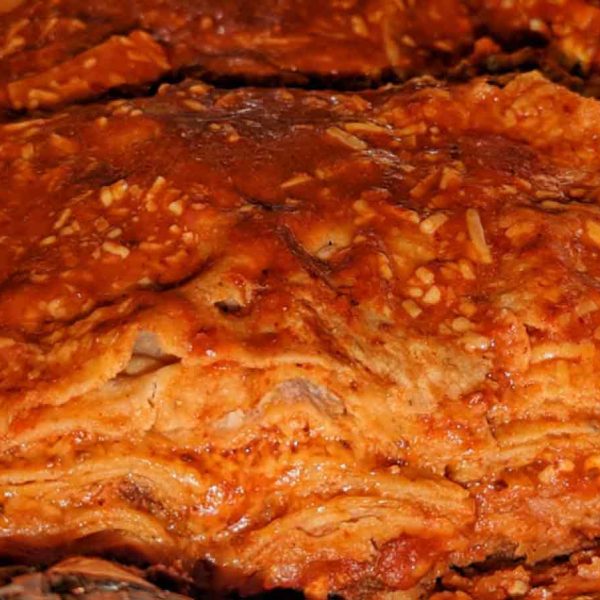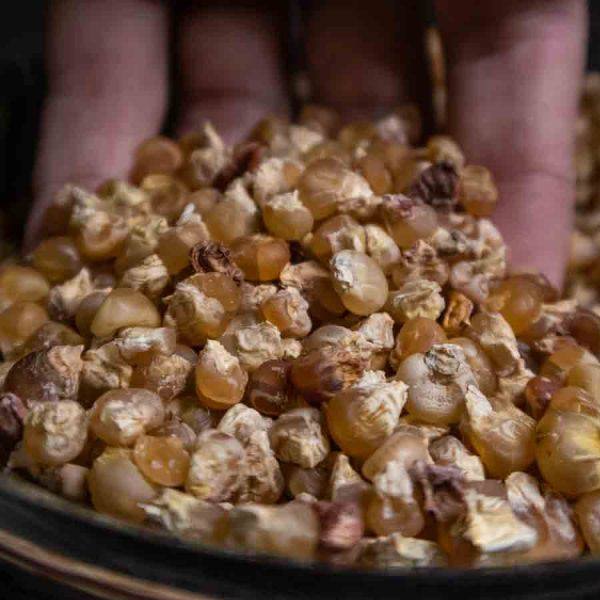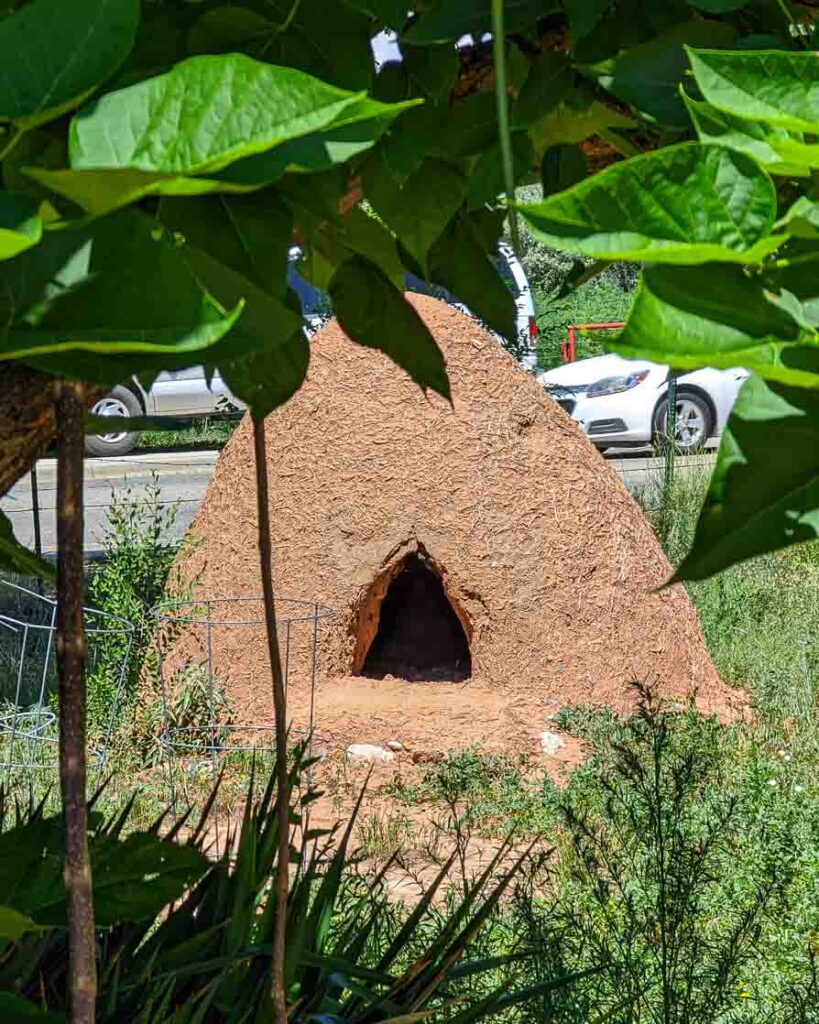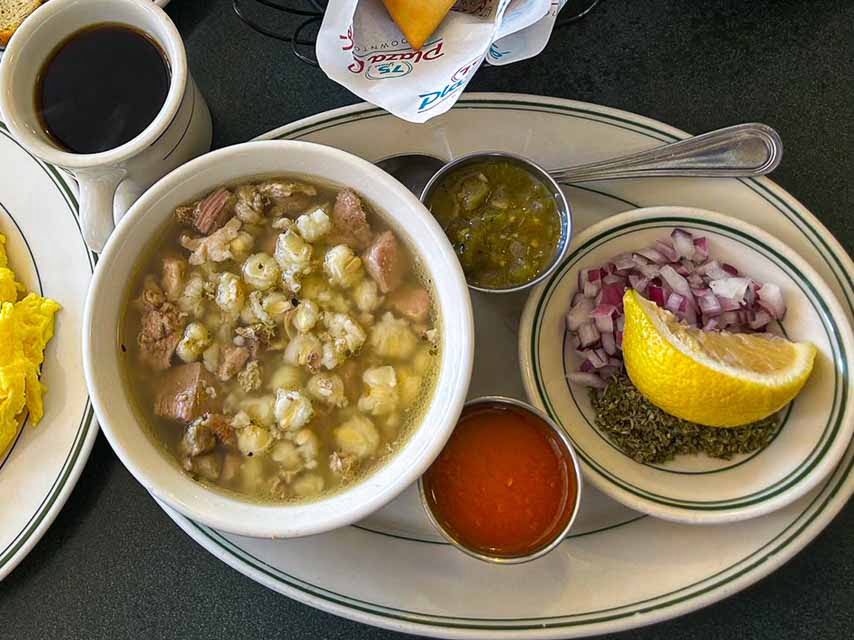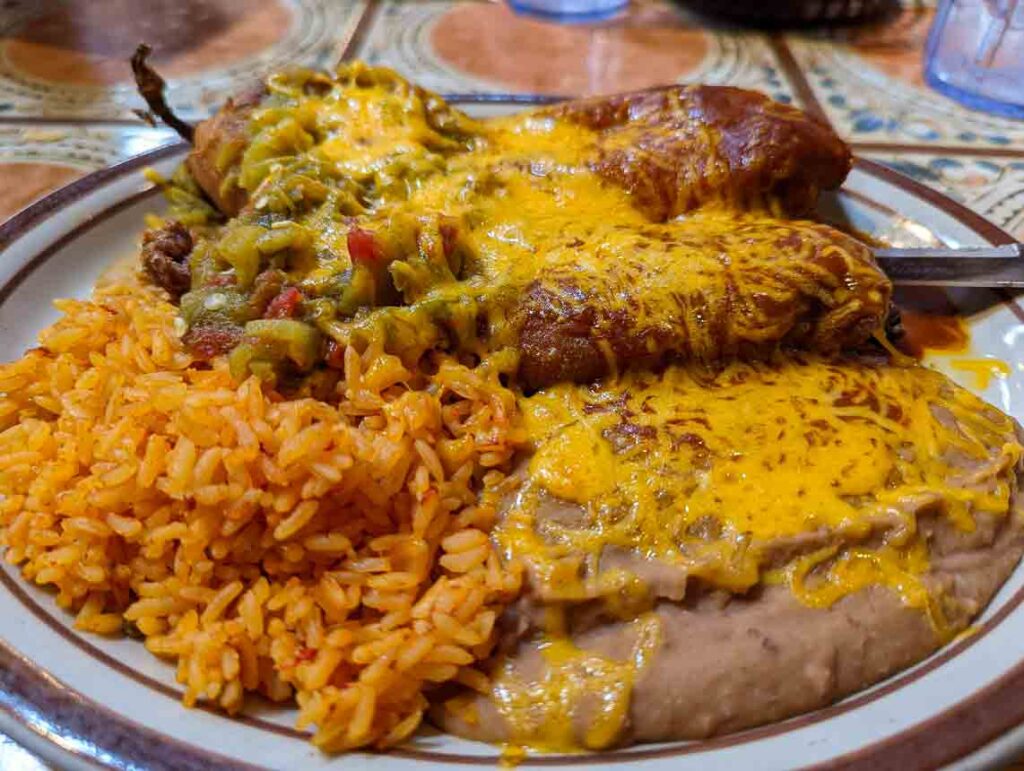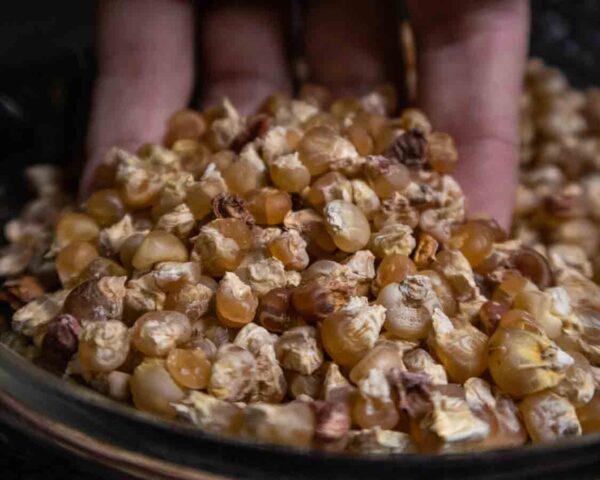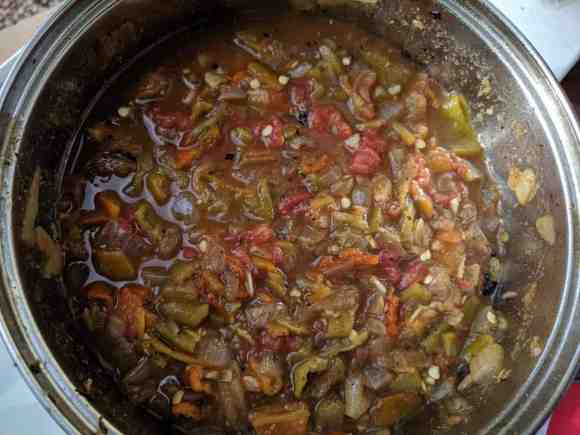Your cart is currently empty!
Tag: cooking

Hatch Red Chile Pork Tamales: A New Mexico Kitchen Adventure
How to make Tamales
The aroma of Hatch red chiles mingling with savory pork and warm masa is pure New Mexico magic. Making tamales takes time and effort, but the results – flavorful bundles of tradition – are well worth the reward. They’re perfect for gatherings or freezing for future feasts. Here’s your expanded guide to creating these delicious culinary treasures.
The Masa: Heart of the Tamale
- Dried Masa Harina:
- Follow the package instructions as a starting point for the water-to-masa ratio.
- For a richer, softer masa, beat in lard or vegetable shortening. Using a stand mixer or electric beaters makes this process much easier.
- Enhance the flavor by swapping some of the water for warm chicken or pork broth.
- Season generously with salt! The masa makes up a significant portion of the tamale’s flavor profile.
- Check for doneness: A small ball of masa should float in a cup of hot water.
- Frozen Prepared Masa:
- Thaw overnight in the refrigerator.
- If it feels too moist, add small amounts of masa harina or cornstarch until it reaches a manageable consistency.
- The flavor is typically pre-seasoned, but it may need an additional touch of salt.
The Red Chile Sauce: Fiery Soul of the Dish
- The Chiles: Use dried Hatch red chile pods for the most authentic, complex flavor. Lightly toasting them in a dry skillet will enhance their aroma. Rehydrate them in warm water according to our Crimson Chile Concoction recipe [include hyperlink to the previous recipe].
- The Base: Blend the rehydrated chiles with garlic, onion, cumin, Mexican oregano, salt, and pepper, ensuring a smooth, velvety consistency.
For more information, be sure to check out our recipe to make red chile sauce!
The Pork: Tender and Flavorful
- Cut: Pork shoulder or butt are ideal, cut into large chunks. Keep plenty of fat for optimal flavor and lusciousness.
- Season: Generously coat the pork with salt, pepper, cumin, and some red chile powder.
- Cook: Several methods work well!
- Braise slowly in a Dutch oven with a bit of your red chile sauce. This yields the most tender, flavorful pork.
- Use a pressure cooker (like an Instant Pot) for a faster process.
- For maximum caramelization, brown the chunks first, then simmer in the sauce until tender.
- Shred: Remove any bones and use two forks to shred the pork for a perfect tamale filling.
Assembly: Tradition in the Making
- Soak Corn Husks: Submerge dried corn husks in hot water until pliable. This can take anywhere from 30 minutes to a couple of hours.
- Spread the Masa: Aim for a thin layer (about ¼ inch) over the wider part of the husk. A masa spreader tool helps, but an offset spatula works as well.
- Fill and Fold:
- Add a generous spoonful of filling and a bit of sauce down the center of the masa.
- Fold the sides of the husk together, then fold over the narrower end.
- Secure: Use strips of soaked husk to tie the tamales for steaming.
Steaming: The Final Step
- A dedicated tamale steamer is ideal, but a large pot with a steamer insert works well.
- Arrange tamales upright, ensuring the open ends face up.
- Steam for 1-2 hours, checking water levels periodically to prevent scorching.
- Doneness: The masa should pull away easily from the husk.
Unwrap and Enjoy!
Savor the reward for your labors – savory, satisfying bites steeped in tradition. Serve your New Mexican red chile pork tamales with extra sauce, rice, beans, and your favorite accompaniments. If you have people over, keeping a pot of tamales on the stove is a great way to show some Southwestern hospitality.
Tips:
- Make a big batch – tamales freeze beautifully! Reheat by steaming them again, or microwaving on a medium setting.
- Enlist friends or family – tamale-making is a social event, and many hands make quicker and easier work. The best part is that everyone can have a full dinner, and take home some tamales for their effort too!
- Customize: Use your favorite red chile recipe, or swap pork for shredded chicken or a vegetarian filling. You can also use green chile sauce, or a lot of different fillings. In New Mexico, our favorite tamales are red chile and pork, but there are a lot of different types of tamales!
In case you are looking for other ways to use your red and green New Mexico chile, be sure to check out our recipes section!
- Dried Masa Harina:
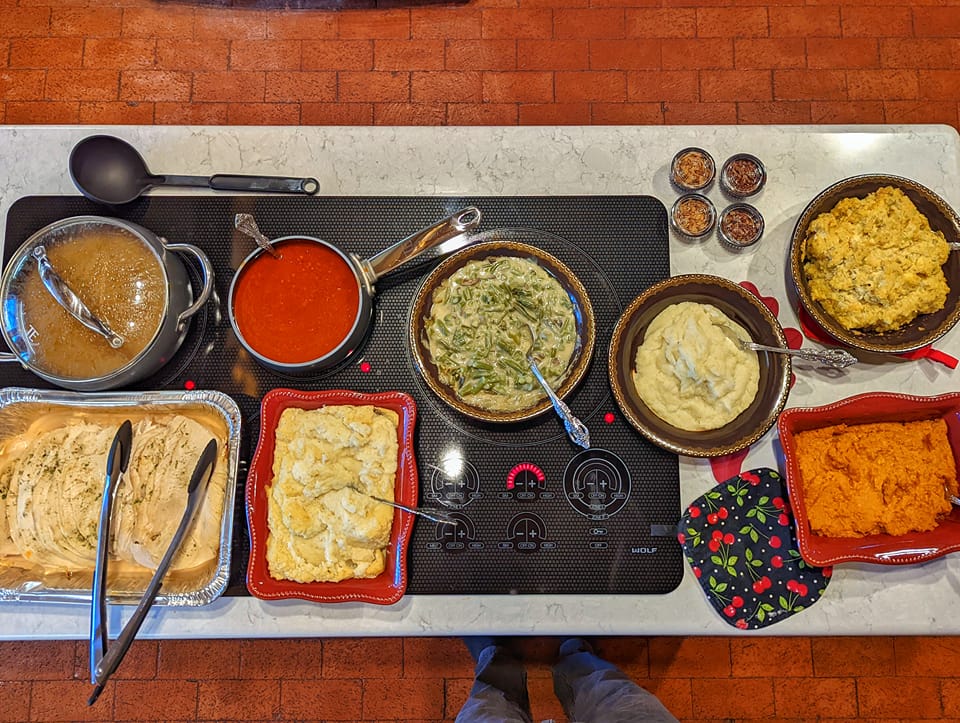
Red Chile Sauce: A Study in Pure Flavor
The Heart of New Mexican Cuisine
In the Land of Enchantment, red chile sauce reigns supreme. It’s more than just a condiment; it’s a cultural touchstone, a fiery symbol of our state pride. The question “Red or Green?” echoes through New Mexican kitchens, and while we adore our green chile, there’s something undeniably special about the deep, earthy flavor of a well-crafted red chile sauce. Nearly every restaurant boasts its own secret recipe, a testament to the versatility and enduring appeal of this crimson condiment. If you want to make New Mexican food, this is our mother sauce, as important as Béchamel in French cuisine.
Red Chile Sauce Recipe
Ingredients
- 12-15 dried Hatch red chile pods (choose your own heat level)
- 4 cups water or chicken/vegetable stock, warmed
- 4 cloves garlic, minced
- 1/2 small onion, coarsely chopped
- 1 teaspoon salt
- 1/4 teaspoon freshly ground black pepper
- Optional: For extra heat, sprinkle in some other more spicy chile powder or blend in a hotter chile pod
- Optional: 1 ounce unsweetened dark chocolate, finely grated
- Optional: 1 teaspoon ground cumin
- Optional: 1/2 teaspoon dried Mexican oregano
Instructions:
- Revitalize the Chiles: Snip or break off the stems and shake out the seeds from your red chile pods. Give them a rinse to clean off any dirt or residue. Toast them briefly in a dry skillet over medium heat, just until aromatic. Barely submerge the chile in hot water, and simmer covered for 15-20 minutes until fully rehydrated and softened.
- Aromatic Infusion: Sauté garlic and onion in a touch of olive oil for 1 minute. Deglaze with a splash of the chile soaking liquid to capture flavor.
- Concoct the Base: In a blender, emulsify rehydrated chiles, garlic/onion mixture, soaking liquid, cumin, oregano, salt, and pepper until velvety smooth. Blend for a long time so the sauce has an even consistency. Don’t overfill your blender, as blending hot sauces can be dangerous.
- Refine and Enhance: Taste, and adjust salt/pepper. For subtle complexity, stir in the optional dark chocolate. If too thick, thin with additional liquid. If it is thin, you can cook it longer to evaporate the water.
Note: Some people prefer to change the water before blending, and many New Mexicans don’t like using cumin and oregano. This is my way to make the sauce, feel free to copy it or change some stuff up.
For storage, pour it into glass, as red chile will stain plastic containers permanently. You can also scoop it into freezer bags and freeze it in blocks for later use.
How to Use Your Red Chile Sauce
- The Classic: Smother stacked enchiladas with this sauce, layering in your favorite cheese and filling for a quintessential New Mexican experience. Enchiladas are such a common use of a red chile sauce, that is it often called simply Enchilada Sauce!
- Carne Adovada: This is one of my favorite ways to eat red chile. It is basically stewed or braised shredded pork using red chile sauce to flavor it. This can be super messy, so don’t eat a carne adovada burrito it in the car.
- Morning Spice: Drizzle over huevos rancheros for a fiery, flavorful start to your day.
- Chili Champion: Build a hearty bowl of chili, using your sauce as the foundation for beans, meat, and vegetables. In New Mexico, our favorite “chili” is green chile and pinto beans, but our red sauce makes a fantastic base for a lot of meat and beans based dishes.
- Creative Dips: Thin the sauce with a bit more liquid for a unique, flavorful dip with tortilla chips. It can blend quite nicely with a jarred salsa or hummus too.
- Flavorful Marinades: Combine with a touch of lime juice and oil to marinate chicken or pork before grilling
- Red Chile Pork Posole: Making a hearty soup with nixtamalized corn is a great way to fill up and warm yourself up in the colder months!
- Red Chile Pork Tamales: This sauce is fundamental in making our classic New Mexican tamales. This is the perfect food for family get togethers like Christmas or Thanksgiving. Feel hungry, grab a tamale. Now you feel better.
- Bloody Mary Mix: For the drinkers, try a quick spoonful of this in your brunch Bloody Mary. It will open your eyes and wake you up, that’s for sure.
For more ideas, be sure to check out our recipes section!
Unique ideas for a New Mexican fusion
I’ve lived in 5 different countries including the US, and worked as a chef in a couple of them. During this time, I did a lot of experimentation with different flavors that can blend quite well.
Some interesting things I’ve tried to make a unique sauce:
Instead of soup stock, miso is an interesting choice for saltiness. It also makes an awesome ramen base. It reminds me of a time pre-covid when I made a red chile miso with blowtorched chashu and green onion. the flavor of smoke was amazing.
Using soy sauce or fish sauce instead of salt. These can make the sauce a bit funky, but it will pair quite well with strong flavored dishes. I wouldn’t use this for a red chile focused dish like enchiladas, but it is amazing in carne adovada!
Mix in a different type of chili sauce, such as Gochujang or Harissa to give the concoction a more full kick of chile flavor.
Mix in different peppers like chipotle, chile pasado, or pasilla. Also add in some dark chocolate or ground nuts like almonds or cashews. This can make a very New Mexican, Mexican mole sauce.
Health benefits of red chile sauce
Red chile sauce, made with antioxidant-rich chile peppers, packs a nutritional punch. Its key ingredient, capsaicin, has been linked to potential health benefits. These include improved metabolism, pain reduction thanks to its anti-inflammatory properties, and possible boosts to heart health. While enjoying its fiery flavor, remember that moderation is key, and a balanced diet with plenty of fruits and vegetables is essential for optimal health.
Enjoy your NM red chile sauce
Now you have a sauce that is equally important in New Mexican cuisine as our green chile sauce! Although you can get red chile sauce at restaurants year round, I feel that it is a more festive option than green chile. I eat red chile a lot more around the holidays, but I have green all the time. In case you are looking for an interesting way to try red chile sauce when visiting Albuquerque, I highly recommend a visit to The Dog House their red chile chili dog is one of the best hot dogs I’ve ever had.
One of the best ways to make a red chile sauce is with chile that falls off your chile ristra. As the ristras get older, they become more brittle, and also occasionally are damaged by wind or other interaction with the physical world. Instead of throwing the chile away, save it somewhere, and use it to make a sauce. Chile ristras are delicious! Dried red chile pods are good for a few years, so eating your old ristra when you when you decide to refresh your decoration is a tasty and eco-friendly idea!

Red Chile Stacked Enchiladas
If you have ever been through New Mexico, or at least been to a New Mexican restaurant, odds are you have had enchiladas. Red chile, green chile, chicken, cheese, beans, mushrooms, vegetarian or vegan, they are delicious any way they come. Personally, I like recommending red chile over green for enchiladas, because I think the textures match, and the sauce is also easier and less work to make. In fact, if you have a chile ristra hanging, you can just pull a few chile peppers off the bottom and make it like that. Ristras are food after all.
Restaurant style enchiladas
Typically if you go to a restaurant, you will be served rolled enchiladas. Rolled enchiladas are a delicious treat, but somewhat harder to make in a home kitchen. One reason is that restaurants often have more resilient corn tortillas, which haven’t cooled down yet. When corn tortillas cool down after being made from masa, certain oils retract, and leave the outer edges prone to cracking and breakage. Unless you plan to make your own corn tortillas, which are delicious, but also labor intensive, stacked enchiladas are a great way to go.
Home-style stacked enchiladas
Think about a stacked enchilada in a similar way to a lasagna. You want the same type of deep pan. From there, layer corn tortillas and red chile sauce, along with your other ingredients. Bake at 350 degrees for about 20 minutes. If you are making a big, thick dish, cook it longer. That being said, this is an incredibly forgiving recipe. The corn tortillas will soak up the sauce, but not really get soggy. The water in the sauce also prevents it from really getting burned. If you cook it for an hour, you still won’t really destroy it. Because of that, have fun with it.
Different ingredients to use
As you can see, I have intentionally left the recipe very vague. With a red chile stacked enchilada, you will be working with a delicious New Mexico chile sauce, which works well with just about everything. If you like cheese, layer it in with the sauce when you are building your dish. The same goes with shredded chicken, pork, minced meat, or anything else. The main thing is to use meat that is in small and manageable pieces. If you use thick pieces of steak or chicken, then cutting through them will also end up destroying the structure of the enchilada. These things should be fork tender, so either use a tender pre cooked meat, or cut it into very small pieces.
Vegetarian and vegan options
If you are looking for a vegetarian way to make this dish, cheese and red chile has been a local classic for generations. You can also mix cheese with beans, mushrooms or other things. Mushrooms have a lot of water in them, so sauté them first in your favorite oil before building your enchiladas. Beans from a can typically have a good texture, but if you are cooking from dried beans, make sure they are nice and soft. Soak them, boil them, season them and give them a small mashing. It really helps bring the texture together with the corn tortillas. Nut based cheeses work pretty well in this dish, but an easy way to test is to simply mix a bit of your red chile sauce with the nut cheese. If it tastes nice, then it will be even nicer baked with some nice corn tortillas. I made a red chile hummus that was incredibly nice in this dish before. Something about sesame, cumin, and red chile really melded well together with the corn tortilla. Another nice idea is to use some chicos beans, just make sure they aren’t too wet!
Final comments
I worked a few years as a chef, but I never really blogged about it at the time. I know that my recipes aren’t terribly detailed, but I hope that you can take away some new techniques. I’ve always felt that rigid recipes mean boring food, and instead like to impart my cooking philosophy with what I write. This dish is one of the best ways to take a New Mexican classic and really make it your own. With red chile stacked enchiladas, you can take about an hour to make a meal for the whole family, and even have nice leftovers for lunch. It’s a classic soul food here, and I really hope you can share it with the people you love
Be sure to check out our recipes section for more ideas about how to use New Mexico’s favorite food!

Chicos Food
Few foods outside of red and green chile will evoke such a comfortable and homey feeling as chicos and pinto beans. Pinto beans are a staple in New Mexican cuisine, with people getting very excited for new crop beans in late September. Chicos are another thing that New Mexicans go wild for, and are typically ready a few weeks after the corn harvest. When you pair beans and chicos together, magic happens, and it tastes far better than beans with ham hocks or any other addition, though extras like that can also be included in a bowl of chicos & beans and taste wonderful. Beyond just beans, chicos are a great ingredient to add into many dishes, particularly soups.
What are chicos?
Chicos are a wonderfully delicious New Mexican food item. They are essentially a slow roasted and dried corn. Chicos del horno as they are called refer to the method of cooking and drying. Horno means oven in Spanish, but in New Mexico, it often refers to a traditional adobe oven that you will see a lot of in Native American reservations and small farming communities in New Mexico. Adobe is a large part of our architecture in New Mexico, even down to our ovens. While cooking in the oven, it will get a very nice savory and smoky flavor profile. Adding chicos to any soup will kick the flavor up a notch, but chicos are quite hard and need to be cooked for a while to become tender. They also don’t puff up while cooking like posole does.

These hornos are made by many families in Northern New Mexico How are Chicos Made?
They are packed into hornos like the one above and roasted with the husk on, typically overnight. After that, they are removed and tied up to hand and sun dry, similar to chile ristras. After they have dried completely, they are shucked from the corn and bagged up to be used in cooking throughout the year.
How to use chicos in cooking?
Chicos are amazing for just about any strongly flavored soup. They are quite flavorful, and might overpower a more simple soup base. Be sure to soak chicos overnight, as they are VERY dense, and need time to absorb water and soften up. Chicos should be cooked for about 4 hours to achieve an ideal texture, though they are acceptable after boiling for two hours, if they were properly soaked before. Because they take much longer than most dried foods, I recommend to start boiling chicos when you begin preparing other ingredients in your soup. That way, the dense dried corn can get the extra cooking time it needs, while not slowing down your cooking process too much. The most common way we use chicos in New Mexico is cooking them with pinto beans. The flavors synergize incredibly well together, and and the sum is certainly greater than its parts.
New Mexican food
New Mexican cuisine is unique related to other cuisines like Tex-Mex and Mexican food, primarily because of the unique ingredients we possess. Although Mexico has many different chiles available, none of them really compare to our New Mexican chile. First of all, our chile is much bigger an meatier. Another thing is that we roast chile in a very different way. In Mexico, many restaurants might offer a flattop grill roasted jalapeno or serrano pepper with your meal. In New Mexico, although plenty of Mexican food trucks sell food this way, we also have a large chile roasting industry, using mostly fresh green chile from Hatch or other growing regions in the Rio Grande valleys of New Mexico.
Beyond just chile, we also have a big corn tradition similar to Mexico. Although flour tortillas are more commonly used here than our Southern neighbors, we also have a great fondness for corn in every way. Enchiladas, whether red or green, need corn tortillas because they keep a nice texture even when smothered by a chile sauce!
Corn in New Mexican food

A bowl of posole is just one of many ways that New Mexicans enjoy corn! In various central and northern regions in New Mexico, there are a good amount of corn farms, growing yellow, white, blue, and multicolored corn. We also have plenty of different local cornmeal, masa, and nixtamalized corn, posole. With all these different varieties of corn commonly used in our food, it should be no surprise that we also have our own specialty corn products like chicos as well. Few products express the depth of corn flavor as strongly as chicos however. The process to make them imparts a smoky flavor, but the sugars in the corn also reduce into savory flavors as well. It gives a really unique but very strong corn flavor.
Where to get chicos and beans in Albuquerque
During the chile season, we will have New Mexican chicos and pinto beans available at 2010 Eubank Blvd NE in Albuquerque. We will also have them on our online shop, which should be up and running by September 2022. Unlike prior years, it seems like chicos will be more readily available in New Mexico beginning this year. Pinto beans are never in short supply, and we work with the best bean farmer in the state, Ness Farms. Unfortunately, other New Mexican delights such as piñon will continue to be sparse, as the last few years have had very few cones dropping.
Other New Mexican specialties
New Mexico has many great things besides chicos, and they mix well together too! Chile ristras are a decoration that is as New Mexican as it gets. New Mexicans are proud of all things chile, and ristras a both a great decoration and a fantastic way of storing red chile for when you need it in a red chile sauce. Few things make the state come alive more than the chile season! Other than that, piñon is something we go wild for at the end of the year, when it is cold enough for developed cones to start dropping. We are very proud of chile rellenos, the stuffed and fried chile peppers, most commonly using Big Jim chile. Red chile pork tamales are another corn and chile based New Mexican dish that we are quite proud of. The red chile and pork base is also quite common for things like carne adovada and posole soup.

A chile relleno like this is something you could only find in New Mexico! Both of these dishes, although Mexican in origin, are made quite uniquely in New Mexico, even compared to Chihuahua and Sonora, the Mexican states we share borders with. These, along with many other New Mexican delicacies are due to New Mexico’s long legacy as a melting pot of many different peoples. We have a lot of tradition in our food which we are proud of. Although New Mexico isn’t the most well known state, and other Americans sometimes compliment my English, our food stands up to anywhere in terms of flavor and quality. Whether it is chicos, pinto beans, posole, red chile enchiladas, a green chile cheeseburger, or something else, we have flavor in spades. See for yourself when you visit New Mexico if you don’t believe me. We are a great destination for a fall vacation!
Buying Chicos online
In case you are from out of state and would like to try chicos in addition to other great New Mexican ingredients, you can buy them on our webshop!
Chicos
$13.99 – $24.99These chicos are made in the Northern New Mexico town of Espanola, with locally grown corn by farming families who have been doing it for generation. Chicos are very scarce, and we will often be sold out. These chicos are new crop 2024 season corn.. Chicos are a great thing to use in New Mexican […]

Jhett’s New Mexico Green Chile Recipe
As enthusiasts from around the world gather for the Albuquerque International Balloon Fiesta, it’s the perfect time to celebrate with a local culinary favorite—the green chile sauce. Renowned for its unique flavor, roasted green chile holds a special place in New Mexican culture and has even spread its influence to places like Denver. Although you can make this recipe with frozen green chile, getting fresh roasted green chile during the chile season is ideal, as you can get exactly what heat level and flavor you are looking for.
Today’s recipe is mostly vegetarian and easy to make entirely plant-based by simply omitting or replacing the chicken bouillon powder. As a testament to green chile’s versatility, feel free to personalize the level of heat and other flavors to your liking.
Understanding Heat in Green Chile
Before we begin crafting our sauce, let’s discuss the spice factor. Green chiles come in a range from mild to extra hot. By blending different heat levels of chile or by adjusting the use of seeds, you can achieve your desired level of spiciness. Remember, seeds maintain their heat even after cooking.
For those handling hotter chiles, protective food preparation gloves are recommended. The capsaicin contained within can cause prolonged discomfort on your skin and can inadvertently spread, especially through frequent face touching. For gloveless preparation, regular handwashing with soap is imperative to avoid the potent sting of capsaicin. While unconventional, using vodka or olive oil could help in the removal process, soap and water remain the simplest and most hygienic solution.
Vegetarian Green Chile Sauce Recipe
With that guidance in hand, let’s get to the heart of our recipe.
Ingredients:
- 1 lb roasted green chile
- 1 medium onion
- 4 cloves of garlic
- 1 medium ripe tomato
- A strip or zest of lemon peel
- Low sodium soup stock (You can use Knorr brand bouillon for adjustability; both chicken and vegetable flavors are suitable)
- A small pinch of oregano
- A tiny touch of nutmeg and cinnamon
- Ground cumin (double the amount of coriander seeds used)
- A dash of paprika
- A couple of bay leaves
- Salt and pepper to taste
Method:
- Preheat your broiler. This is essential for peeling the tomato later.
- While the broiler heats, finely dice your onion.
- Place the tomato under the broiler until the skin begins to split, showing hints of brown or blackened spots—about 10 to 15 minutes.
- Meanwhile, chop the garlic—larger pieces to avoid burning, smaller for a stronger flavor—but watch carefully as it cooks.
- In a pan over medium heat with canola oil, season the onions with salt and pepper, cooking until translucent and just golden. Add the garlic and stir regularly to avoid charring.
- When the tomato is ready, set it aside to cool.
Time for Green Chile:
- Wearing gloves, remove the stem and peel from the chiles. Slice them open, scrape out the seeds, and chop into small pieces.
- Add the prepared chile to the pan with the onion.
- Turn your attention back to the peeled tomato. Dice it and add the flesh and any juices to the pan. Slice the remaining core to salvage all tomato pieces, discard only the very center stem, and add everything to your pot.
- Let the mixture simmer, stirring occasionally. Insert the bay leaves and lemon peel at this stage, allowing the flavors to meld over roughly 20 minutes.
- Begin seasoning with cumin, coriander, nutmeg, cinnamon, and paprika—spices can always be added, but never removed, so season with caution, tasting as you go.
- Once satisfied with the seasoning, turn off the heat and let the sauce sit for 10 minutes.
- Finally, remove the bay leaves and lemon peel. The flavors should now be perfectly married.
The Final Touch:
When seeking green chile or other related items, consider visiting my family business Farmers Chile Market. And if you have a beloved green chile recipe or adaptation, please share! I’m eager to hear how others enjoy this versatile ingredient.
With your green chile sauce ready, it’s time to savor the rich, complex flavors that New Mexico has to offer, alongside the beauty of the Balloon Fiesta. Enjoy!
Be sure to check out our recipes section for more ideas on how to cook with New Mexico’s favorite food!
